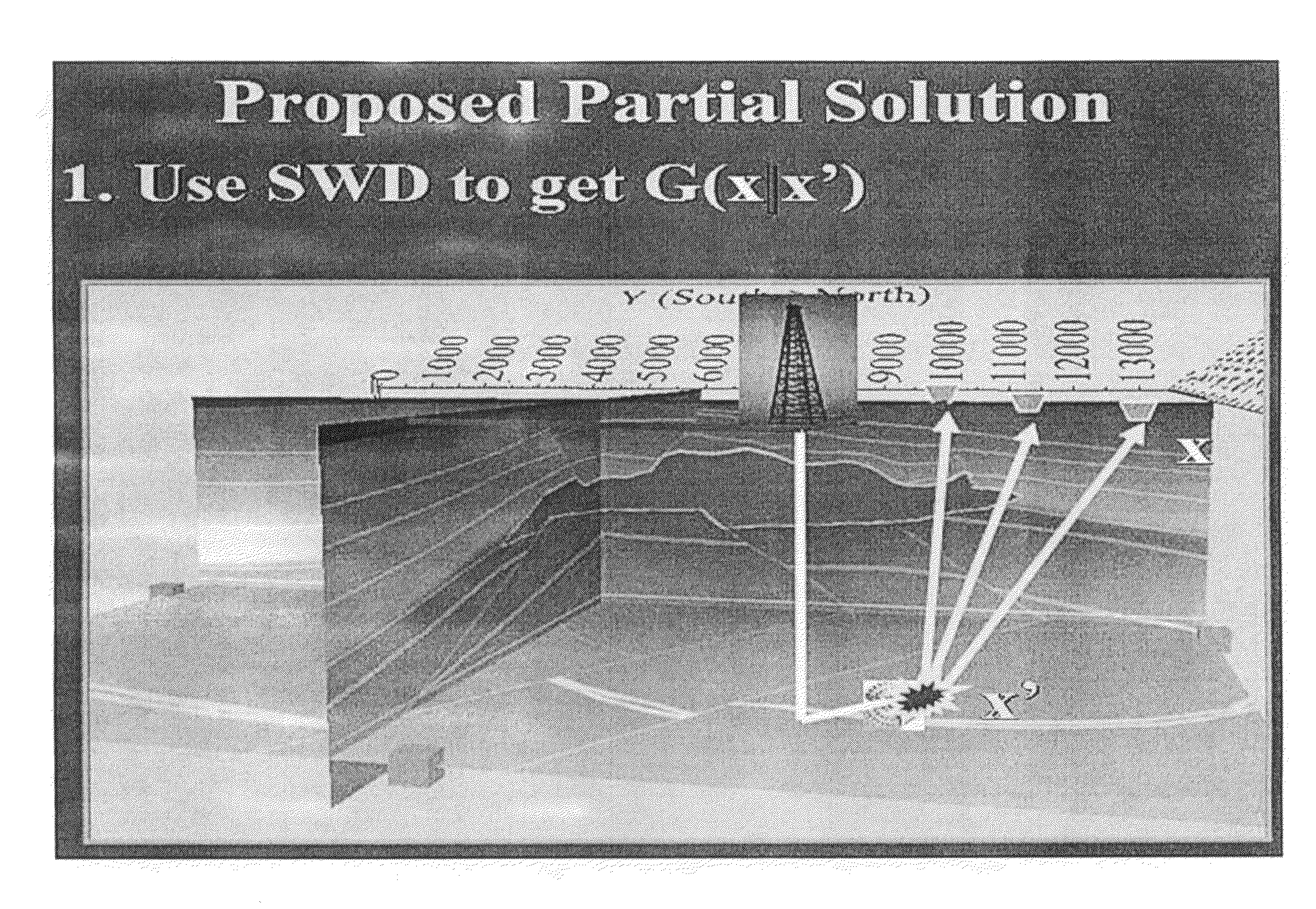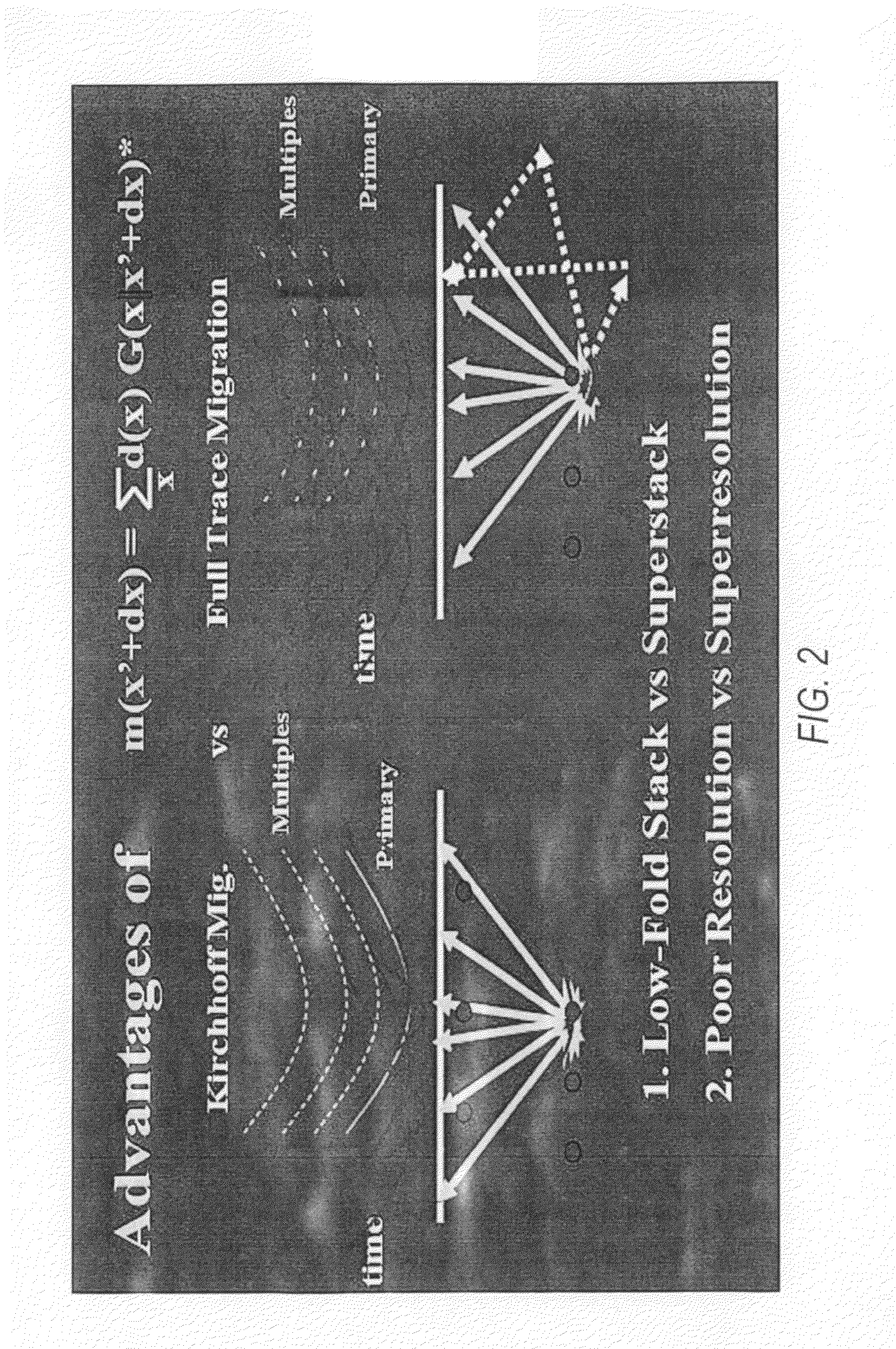Microseismic source location estimation method with high resolution using green's functions
a microseismic source and function technology, applied in seismology for waterlogging, using reradiation, instruments, etc., can solve the problems of high signal/noise ratio, high signal/noise ratio, and inability to direct measurement of fluid flow in reservoirs, if at all possible, so as to improve image accuracy and confirm the reliability of green functions
- Summary
- Abstract
- Description
- Claims
- Application Information
AI Technical Summary
Benefits of technology
Problems solved by technology
Method used
Image
Examples
Embodiment Construction
[0040]In accordance with this invention, Green's function G(x,z,t|x′,z′,0) is estimated from various data sources, including RVSP, VSP, SWD or surface data, and used to provide images of the estimated locations of hydro-frac sources with a high degree of resolution. These Green's functions can be used as the migration kernels to estimate hydro-frac source locations with greater accuracy than the diffraction limit, because all of the natural arrivals in the data are utilized.
[0041]Green's function can be estimated from surface seismic data using two different methods. The first method is to use the drill bit as a seismic source as is known in the seismic-while-drilling (SWD) methods. The seismic data are recorded on the surface and correlated with the recorded pilot signal to give the impulse-like Green's function. Evaluation of the Green's function far from the drill bit is achieved by employing a wavefield continuation method using a local velocity model.
[0042]2. The second method ...
PUM
 Login to View More
Login to View More Abstract
Description
Claims
Application Information
 Login to View More
Login to View More - R&D
- Intellectual Property
- Life Sciences
- Materials
- Tech Scout
- Unparalleled Data Quality
- Higher Quality Content
- 60% Fewer Hallucinations
Browse by: Latest US Patents, China's latest patents, Technical Efficacy Thesaurus, Application Domain, Technology Topic, Popular Technical Reports.
© 2025 PatSnap. All rights reserved.Legal|Privacy policy|Modern Slavery Act Transparency Statement|Sitemap|About US| Contact US: help@patsnap.com



